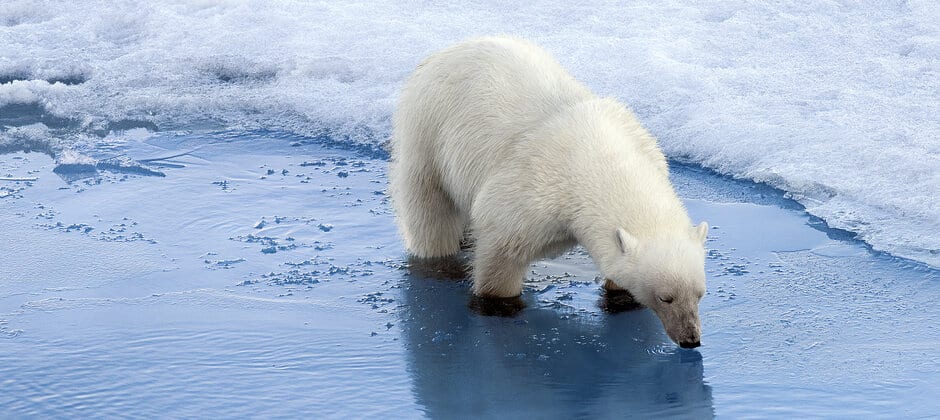Share this article
Northernmost polar bears temporarily benefit from warming
Polar bears in one of the northernmost populations in the world are seeing some short-term transient benefits from climate change.
Climate change in Kane Basin, between northwestern Greenland and Canada’s Ellesmere Island, is leading to the breakup of thick sea ice that normally stays frozen all year round. Those conditions actually provide improved seal-hunting opportunities for polar bears (Ursus maritimus).
“The system has become, temporarily, a better place for polar bears,” said Kristin Laidre, an associate professor at the University of Washington’s polar science center and the lead author of a study published recently in Global Change Biology.
In previous research, Laidre and her colleagues found that the larger Baffin Bay polar bear population to the south is faring worse from climate change, since their territory has lost so much ice that there are fewer opportunities to hunt seals. They found that bears there were thinner, and having fewer cubs. But the region to the north in Kane Basin is typically so cold that a little warming has actually improved hunting conditions for bears.
Laidre and her colleagues worked from 2012 to 2016 in the Kane Basin, using tranquilizer darts to capture bears and measuring their size, weight and body fat. The team fitted them with satellite tracking devices to follow their movements, and they monitored body conditions of other bears from aerial observations. They compared the data they collected to a similar study conducted from 1993 to 1997.
Satellite data showed that sea ice in the region had changed in the two decades between these studies. Whereas the area had previously seen year-round ice cover, the area is now experiencing seasonal breakup in some areas and thinner sea ice.
This appeared to actually favor the bears in Kane Basin.
“The bears we studied in the 2012-2016 period are doing well. Their body condition is improved,” she said. Reproduction seems to be stable in this population as well.
If there is too much ice and it is too thick, the bears can’t break through it to hunt seals. Thick ice also does not allow for much production of things like algae, which ultimately attracts wildlife higher up on the food chain. Likewise, the seals don’t emerge to bask on thick ice as much. But if the ice is thinner offering more biological production, it provides the bears an improved platform for hunting seals.
“They are kind of in a temporary sweet spot,” she said.
But she predicted these benefits are transient due to the lack of sufficient global action on carbon emissions.
“Assuming we do nothing about climate change, these benefits aren’t going to last forever,” she said. She predicts that that even in this northern population, the bears may be eventually forced onto land more often due to a lack of ice, similar to populations in Baffin Bay.
Header Image:
Kane Basin polar bears are seeing some short-term benefits from a warming climate.
Credit: Christopher Michel








